Key takeaways
- Activist teacher resources inspire critical thinking and social awareness, transforming passive learners into active participants in their education.
- Nurturing curiosity in students promotes resilience, critical thinking, and a lifelong love of learning, making education more meaningful and engaging.
- Effective exploration strategies, such as hands-on activities and collaboration, empower students to take ownership of their learning and foster deeper connections with content.
- Community partnerships and real-world projects enhance curiosity and allow students to experience the impact of their inquiries and efforts in promoting social change.

Understanding activist teacher resources
Activist teacher resources go beyond traditional materials—they are tools crafted to inspire critical thinking and social awareness in learners. From my experience, these resources often spark emotions that textbooks rarely touch, encouraging students to question and redefine their understanding of the world. Have you ever noticed how a single meaningful story or activity can ignite a classroom full of curiosity and passion?
I remember using an activist teaching resource on environmental justice that completely shifted my students’ perspectives; they moved from passive listeners to active participants eager to discuss change. It’s powerful to see how well-designed materials can do more than inform—they can transform. What if every teacher had access to such resources that nurture not just knowledge but also empathy and activism?
Understanding these resources means recognizing their role in creating spaces where exploration leads to empowerment. It’s about more than content; it’s about fostering a mindset that challenges injustice and celebrates inquiry. Don’t we owe it to our students to provide tools that help them navigate and reshape the complex world they inherit?
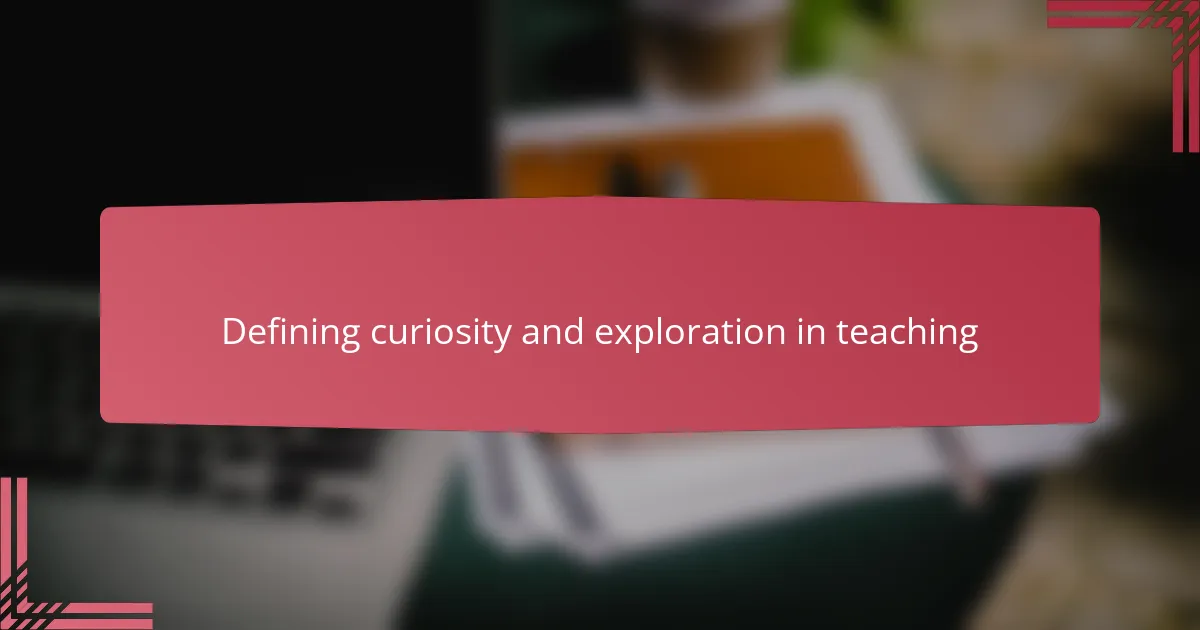
Defining curiosity and exploration in teaching
Curiosity in teaching, to me, is the spark that ignites a student’s desire to dive deeper into a topic. It’s not just about asking questions but about cultivating a hunger to uncover new ideas and connections. When I see a student’s eyes light up with genuine wonder, that’s the moment I know curiosity is alive.
Exploration, on the other hand, feels like the journey that follows that spark—an active process of discovery where students test ideas, challenge assumptions, and make sense of the world on their own terms. I’ve noticed that when exploration is encouraged, learning shifts from a task to an adventure. Isn’t that the kind of engagement we want for every learner?
Defining these two concepts in teaching isn’t always straightforward, but I think of curiosity as the initial invitation and exploration as the ongoing conversation it opens up. Together, they create a dynamic space where education becomes less about answers and more about meaningful questions. How often do we give ourselves permission to enter that space alongside our students?
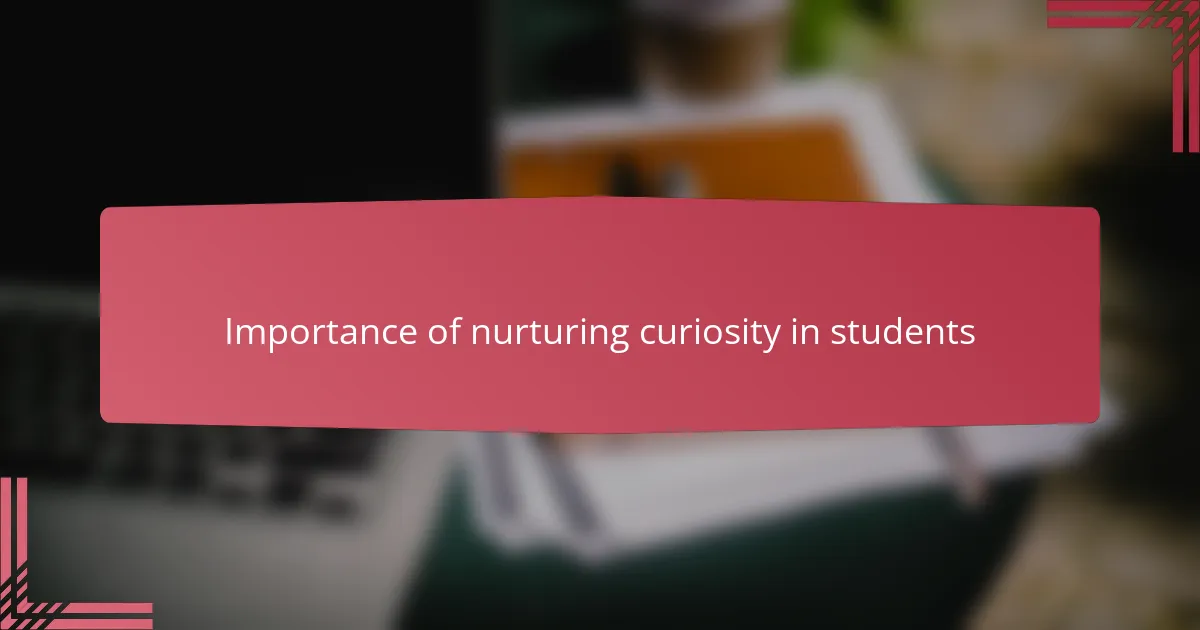
Importance of nurturing curiosity in students
When curiosity is nurtured in students, learning transforms from a chore into a meaningful journey. I’ve seen firsthand how a child’s inquisitive nature can lead to moments of profound insight, making education feel alive and relevant. Isn’t that the kind of engagement that every classroom should aspire to?
Curiosity doesn’t just fuel academic growth; it builds resilience and critical thinking—qualities essential for navigating an ever-changing world. I recall a student who, when encouraged to follow their questions rather than memorize facts, developed a confidence that extended far beyond the classroom. Have you noticed how curiosity can empower students to become active creators of their knowledge?
Most importantly, nurturing curiosity signals to students that their questions matter, that their ideas have value. This simple message can ignite a lifelong love of learning. From my experience, when students feel seen and heard, their exploration becomes fearless and bold—don’t we want to cultivate minds that dare to question and innovate?
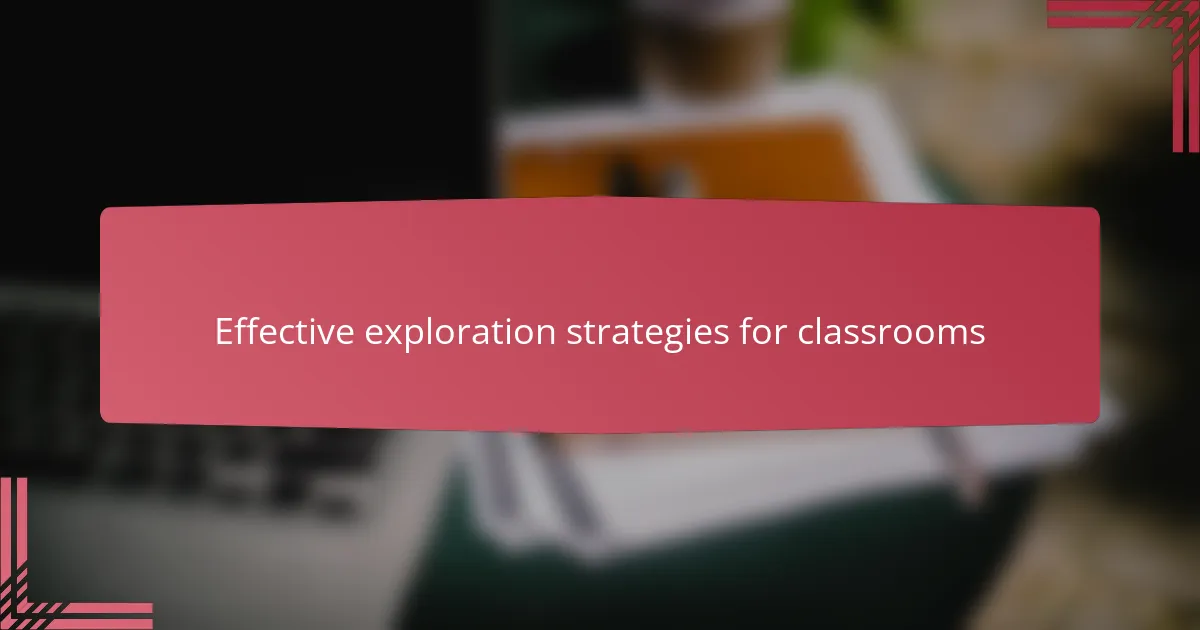
Effective exploration strategies for classrooms
I’ve found that creating a classroom environment where questions are welcomed—and even expected—lays the groundwork for effective exploration. When students realize that their curiosities are valued, they take greater ownership of their learning. Have you ever noticed how a simple “What if?” can open the door to hours of engaged discovery?
Incorporating hands-on activities has been a game-changer in my teaching practice. Whether it’s a science experiment or a community mapping project, these experiences transform abstract ideas into tangible explorations. It’s in these moments that students connect deeply with the content, moving beyond passive reception to active investigation.
Another strategy I rely on is encouraging collaboration during explorations. When students share diverse perspectives, their curiosity multiplies, and solutions become richer. I often observe that peer discussions spark questions I hadn’t considered myself—doesn’t that remind us how powerful collective inquiry can be?

Practical activist resources for nurturing curiosity
One practical resource I’ve leaned on is curated social justice texts paired with reflective prompts. In my experience, these materials don’t just present facts—they invite students to wrestle with real-world dilemmas, sparking curiosity about how systems work and how they might be changed. Have you ever watched a classroom come alive as learners debate and question deeply because they feel those texts are connected to their lives?
Another invaluable tool is multimedia content—videos, podcasts, and interactive websites—that bring activist movements and voices into the room. I remember using a documentary clip about youth-led climate action, which led to an organic surge of questions and project ideas that I hadn’t planned for. When resources are engaging and relatable, they open pathways for students to explore topics on multiple levels, making curiosity not just encouraged but irresistible.
Lastly, I find that community partnerships offer unmatched opportunities for exploration beyond the classroom walls. Coordinating with local activists or organizing service-learning projects provides a real stakes environment where curiosity meets action. From my viewpoint, these experiences transform abstract curiosity into lived understanding, and don’t they also show students firsthand that their questions can influence change?
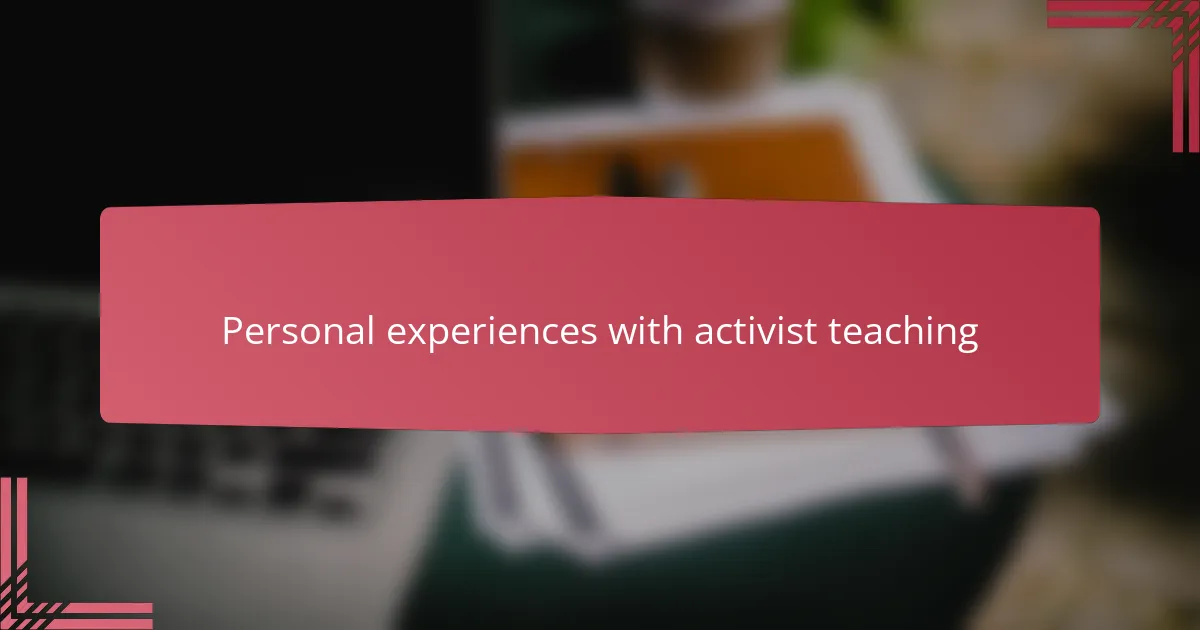
Personal experiences with activist teaching
In my early days as an activist teacher, I recall a moment when a student challenged the dominant narrative around immigration during a class discussion. That question sparked a whirlwind of exploration, leading the whole class to dig deeper into policies and personal stories. Have you ever witnessed how a single brave question can ignite collective curiosity and open up new pathways for learning?
There was also a time when I introduced a project on local environmental struggles, partnering with community activists. Seeing my students connect directly with real-world issues, ask tough questions, and develop their own advocacy ideas made the teaching experience profoundly fulfilling. Moments like these remind me that activist teaching isn’t just about content—it’s about fostering agency and critical consciousness in young people.
What stands out most from my journey is how teaching with an activist lens cultivates empathy alongside inquiry. When students realize their explorations can contribute to social change, learning takes on new meaning. Have you found similarly that when learners feel their voices matter, curiosity flourishes in unexpected and powerful ways?
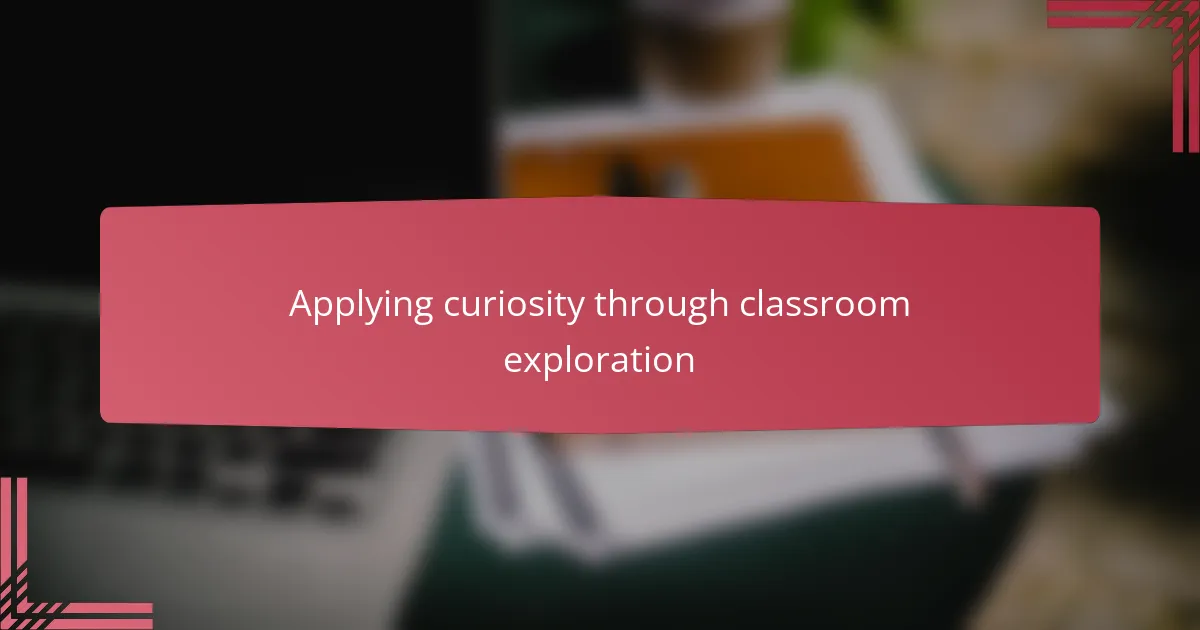
Applying curiosity through classroom exploration
Applying curiosity through classroom exploration means moving beyond simply answering questions—it’s about creating moments where students feel compelled to ask even more. I remember a time when I posed an open-ended question about community change and instead of settling for quick answers, my students dove into research, interviews, and reflection. That kind of curiosity sparks a cycle of exploration that’s difficult to replicate with standard lessons.
When I encourage students to explore topics through hands-on projects or real-world investigations, curiosity becomes tangible—it’s no longer an abstract feeling but a force driving action. I’ve seen classrooms transform when learners take ownership of their questions, building connections between their experiences and the topics at hand. Doesn’t that shift from passive reception to active exploration reveal the true power curiosity holds?
What I find most rewarding is witnessing how classroom explorations fueled by curiosity lead students to unexpected discoveries—not just about content but about themselves. One project on local social issues turned into a deep conversation about values, identity, and agency. Isn’t that the kind of learning that plants seeds for lifelong engagement and courageous citizenship?